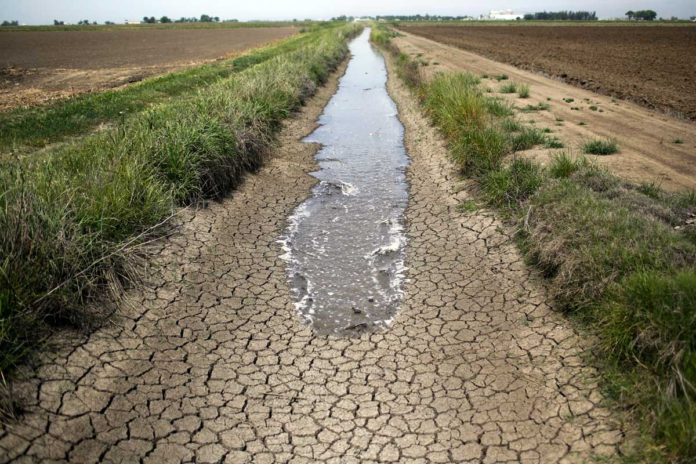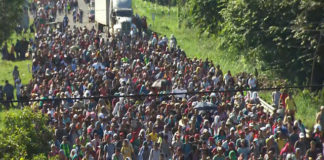
As the drought worsens and the state burns, California continues a policy of ‘growth-as-usual’
By Mark Cromer
[In this high summer of 2017, as wildfires and housing developments continue to devour the state of my birth, this column I penned a decade ago reminded me once more that the more time passes the more things don’t really change at all. California’s a hot mess that’s running out of water and money as the deadly drought of leadership in Sacramento endures. The only thing that has changed since I wrote this is the state and its southern region’s population figures, which continue to grow unabated. The official 2015 estimate is just shy of 24 million, but as it has been over the past two decades at least, that figure doesn’t include the 3 million or more people living in garages or jammed intentionally unaccounted for in multifamily housing stock converted into barracks.]
Twenty-five million beleaguered Southern Californians can look forward to the arrival of autumn this year with the relief of knowing that while the worst is hardly over in the long-term—the region will cool down and stop burning at least for a little while.
And it might even rain some.
But there isn’t likely to be much rest for the weary.
The raging wildfires that ignited across foothills and mountains that were so dry they exploded like arsenals packed with gunpowder may be over for now, but as development chews deeper into the shrinking margins of wild areas, the human impacts of fast-moving infernos promises to grow only more costly—to say nothing of the price paid by the state’s stunning biodiversity.
And while the drought that has turned some of the state’s most prized cropland into dusty, dead fields may ease somewhat with the onset of the fall; the state’s long-dwindling water supplies will continue to disappear with the Sierra snow pack that feeds it.
Yet as California continues to face a series of existential threats to the quality of life it can still offer the nearly 40 million people that call it home; a coherent population policy or plan has yet to be heard from the state’s overly partisan and dysfunctional leadership.
But what homeowners, renters and business owners are hearing from state, county and local agencies this fall is that they have got to cut back on their water consumption—now—or else.
In cities across Southern California, water companies have instituted mandatory reductions in water use and will enforce it with dramatic fee increases for those who surpass their allotted ration. Some cities are also encouraging residents to spy on each other, setting up ‘tip lines’ so neighbors can report each other for violations such as washing their cars and hosing down their driveways.
Sacramento wants Californians to cut back on everything it seems except more people.
The leadership well in Sacramento (never too deep of late) has run so bone-dry, in fact, that both parties are still espousing renewed “growth” as the singular formula for reinvigorating California’s moribund economy; which they apparently believe in turn will restore everything else that’s broken in the state.
This explains why our state’s brain trust in Sacramento was hell-bent last week on sneaking through a waiver of environmental impact reports for a 75,000-seat football stadium that billionaire real estate mogul Ed Roski wants to build in the City of Industry—amid one of the most congested stretches of freeways and roads in Southern California.
In a letter to his colleagues, State Senate President Pro-Tem Darrell Steinberg hailed the 18,000 jobs the project may create without so much as raising a single question as to the long-term contribution another massive entertainment venue would make in a region that’s already in perpetual gridlock.
Like most of his cohorts, Steinberg can’t envision a future for California that’s based on concepts like a sustainable population, one that balances quality of life issues with economic stability. Instead, Steinberg & Friends look at California as a cancer cell; something that essentially has to keep metastasizing until it dies.
While even conservative projections of population growth place upwards of 60 million people in California by mid-century, there has been virtually no public debate in Sacramento over whether the state even has the carrying capacity to sustain such a human presence at our consumption rates and what such a future population would mean for those living here.
Until the state’s leadership is either forced to seriously address the fundamental issue of California’s growing population—and a population summit would be a good start—or until they are replaced by leaders who will take up the most critical long-term issue that confronts our state, then Californians can only expect their quality of life to vanish along with the water every passing season.










